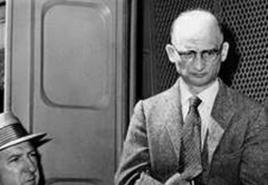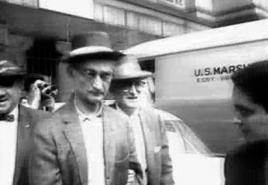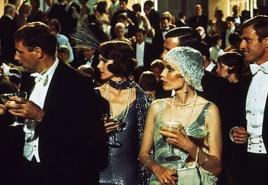Business center "Zenith. Blue tooth - abandoned business center Zenith Abandoned business center in the southwest
Many people want to go there, but we did!
The most famous "unfinished" Moscow.
Why "the most"? First, because it is gigantic: 100 thousand square meters. Secondly, because it is wildly expensive: $ 100 million was invested in its construction. Thirdly, his story is scandalous and even detective. And fourthly, the building is unusually spectacular: a futuristic composition of beveled volumes faced with mirrored glass. No wonder he has established several nicknames: "blue crystal" or "blue tooth".
For Moscow in the early 90s, this was a real breakthrough. There were no buildings here at that time, completely mirrored, no glass of such radical forms. Although this trend has existed all over the world for a long time and managed to acquire a taste of commercial architecture. Academician Aganbegyan discovered the immediate source of inspiration in Italy, it was an office building built by Luciano Perini. The academician, who was then in great power, wanted to build something similar in Moscow for his Academy of National Economy.
The classic of Soviet modernism, Yakov Belopolsky, got down to business, who (together with the young architect Nikolai Lyutomsky) significantly transformed the original idea, leading it away from the banalities of Euro-modernism to almost Suprematist forms. Of course, if you look at it, there is nothing supernatural in the architecture here, the move is the same everywhere: different-colored volumes are arranged, and then a certain segment is cut off at the top of each. However, the plots that arose - for example, the grotesque image of a pitched roof - were very amusing and anticipated many attempts to modernize national forms (in Eric van Egerat in particular).
The building, located next to the Yugo-Zapadnaya metro station, fits perfectly into the modernist landscape of the 60s-70s and became - thanks to the novelty of its forms and cladding - a noticeable landmark. Alas, its further fate was tragic, it stands practically without a roof, rotting - and not even an hour, will disappear from the face of Moscow.
The security guard escorted us to the stairs, along which we immediately climbed to the 5th floor, before that we had not taken pictures.
At the top left you can see a red window, next to which there is an exit to one of the roofs.
Look down.
In some places the curb is knee-deep, not very pleasant sensations. The guard also warned that you can fall into the elevator shaft ... :)
There is a lot of rubbish everywhere, the building has been abandoned for 15 years.
Everyone, decided to go to the roof.
First they went to the wrong floor, they found such a window. In general, there is nothing to photograph inside, on all floors the same thing.
We found an exit to the roof, it was on the 8th floor. Looking back.
Almost a continuation of the previous photo on the right side.
And also, since our people go out through the glass, before going to the roof and after, heaps of broken glass.
At the bottom left you can see the piles of glass and our "entrance".
Everything on the roof is overgrown, from moss and grass, to small bushes and trees.
There are even mushrooms! And also there is a presence of civilization, and quite recent.
The glass in the first photo. Earlier, apparently, they climbed through it, until they cut through another entrance :)
And just like that. Nice, right?)
Houses on Lobachevsky street, as well as the 31st city hospital.
On the left in the photo there is a small superstructure, there are several of them, we climbed into one of them.
Nothing fancy, on the second floor there are closets for equipment and a bunch of scattered wires.
And this is the landscape behind the legs. Entrance to ANKH and MIREA.
We begin to move back to the hole in the window in order to rise higher.
We go inside. We are looking for the stairs and go up the floor, in search of something interesting.
Walked through the floors, somewhere up to 9, found nothing interesting. We began to climb further, and on the stairs between 9 and 10 (I can be a little wrong with the numbers), there was a barricade of ventilation pipes, 2 meters high. It's good that there was a small reinforcing ladder. At first it was scary to climb, because there was complete darkness and it is not clear why this barricade was there and what was under it, but then we decided to do it. By the way, in front of the barricade, on the wall of the stairs, it was written in chalk "GO BACK!" :)
On many floors, the picture is something like this.
Who, how and why is doing this is unknown. Apparently people have nowhere to put their energy. If only they sent her into a peaceful channel ... Everyone would live well in Russia)
From the windows the main view is ...
We walked along this floor to the other side of the building. Almost nothing has changed.
MIREA in the rays of the sun.
We decided not to go around the floors anymore, because it’s the same everywhere. The layout is the same, the garbage is the same. In general, we wanted to go up to the roof. This was no longer a problem. The only thing is the 22nd floor on the stairs in the dark.
On the roof there is a huge winch, under which there is a hole with garbage - one beer bottles, and cans from cocktails. At first we took pictures carefully, then we climbed onto the winch.
The winch itself.
A piece of the roof at the bottom right and a view of the Yugo-Zapadnaya metro station. The large white house on the left is the new building "Elena".
Several photos from another camera, the poet differ in both quality and resolution.
Bus depot, behind it the market. On the right is also a new building, which, in my opinion, does not fit anywhere at all.
Construction site near MIREA, Gazprom building. View of Vernadsky Avenue towards Lobachevsky.
Take a closer look.
"Crosses" on Koshtoyants Street, Moscow State University and other famous new skyscrapers in the background.
Well that's all, thanks for your time! :)
Building height - 22 floors. It is assembled from metal and concrete. The metal frame was designed in Moscow, and the building was built on special machines on the Apennine Peninsula in Italy and then reassembled in Russia.
The idea for the project was borrowed from a building in Bologna, Italy. In Moscow, Yakov Belopolsky took up the project, but he did not want to embody the idea of \u200b\u200banother architect and added "broken" crystals to the concept.
"Blue Tooth" was conceived as the third building of the Russian Academy of National Economy and Civil Service under the President of the Russian Federation (RANEPA), then - as the largest business center in the capital. On the top floor of the building they wanted to make the main restaurant of the city called "Mash". But all plans have failed.

Construction of the building began in 1990, but 14 years later the construction was “frozen” due to funding problems. By that time, the skyscraper was 95% ready. It had a 10-story atrium with panoramic lifts and escalators, a swimming pool and a concert hall. Bathtubs were installed in the apartments, electrical networks, air conditioning systems were installed.

In 2011, the facility was transferred to the Academy of National Economy. The territory is guarded and unauthorized entry is prohibited, but earlier vandals managed to ruin the high-rise both from the inside and outside.




The federal government has already allocated money for the inspection of the "glass" and the development of project documentation. Currently, surveys and measurements of the object are underway. The challenge for the specialists is to check the stability of the building. All surveys are planned to be completed within a year.


The fate of the long-term construction has not yet been decided. But there are several options for the development of events. The first is to complete the building and reinforce the structures, the second is to replace individual elements of the building and complete the construction.

In January 2017, at the auction, a company was determined that will develop the project and reconstruct the long-term construction. The financing issue has been resolved, the contractor can complete the building in two or three years. It remains to wait for the results of the survey.

"Blue Tooth" is a building with a height of 22 floors and a total area of \u200b\u200b100 thousand square meters. The building is located near the Yugo-Zapadnaya metro station and is well observed from the surrounding areas. The building consists of metal, concrete and blue glass, which are the facing of an unfinished high-rise. Blue Tooth is 85% built, but it is an extremely dangerous place for any visitors. The unfinished building contains many unfinished elevator shafts. At almost every step you can find pieces of protruding reinforcement and unexpected breaks. Together with the lack of lighting in the building, Blue Tooth is dangerous even for adults. In this regard, the building is surrounded by a fence and has round-the-clock security.
The name "Blue Tooth".
The official name of the unfinished high-rise is the Zenith Business Center. Popularly, this building has many unofficial names. The most famous of these is Blue Tooth. Also known are the names "Crystal", "Iceberg" and "Ice". All names are associated with the extraordinary artistic design of the building, made in the manner of European high-rises.
Plans to use Blue Tooth.
At the moment, "Blue Tooth" is owned by the Russian Federation and is offered for sale. The amount of possible redemption of the abandoned building is estimated at $ 150-250 million, and the cost of completion at $ 50 million.
Interesting facts and rumors "Blue Tooth".
There are at least a few fatal accidents that have been reliably known to have occurred on the Blue Tooth. Most of them refer to falls from great heights.
- Previously, there was a large crane next to the building. After several jumps of base jumpers, it was decided to dismantle it.
- "Blue Tooth" has long been chosen by vandals. A lot of glass was broken, the building was painted with graffiti, and all construction materials were plundered within 1 year.
The Russian government will allocate 8.7 billion rubles for the completion of one of the most famous long-term construction projects in Moscow, the Zenit training and business center near the RANEPA in the south-west of Moscow. Completion of the project is planned in 2021
Training and Business Center "Zenith" (Photo: Lori)
The Russian government has decided to complete the famous glass skyscraper near the Yugo-Zapadnaya metro station in Moscow. The building on Vernadsky Ave., 82, bldg. 5 is proposed to be included in the Federal Targeted Investment Program for 2017 and planned 2018 and 2019. To complete the reconstruction project worth 8.7 billion rubles. planned by 2021. Information about this is contained in the bill on the federal budget for these years.
The materials to the draft budget indicate that funding is allocated in accordance with the state program "Development of Education" for 2013-2020. Construction of a building “located on the same land plot with the main campus of RANEPA (Russian Academy of National Economy and Public Administration under the President. - RBK), will almost completely solve the problem of the shortage of space in the Academy in Moscow, ”the explanation says. In addition, the completion of the reconstruction will allow "to eliminate the damage caused to the architectural appearance of the city."
Academic long-term construction
The decision to build the Zenit business center was made back in 1989. The initial project assumed that courses in international business for students of the Academy of National Economy (the name of the university before the reorganization) would be held here. The project was initiated by the rector of the academy, Abel Aganbegyan, who agreed on the implementation of a large-scale project with the Italian company Valany International.
According to the development plan in a 20-storey mixed-use complex with an area of \u200b\u200bover 100 thousand sq. It was planned to place a five-star hotel with 300 rooms, retail space, a conference hall, a gym, a restaurant and underground parking for 400 cars. About 35 thousand sq. m was planned to be allocated for offices, and 15 thousand sq. m was to be occupied by the business school itself. The building, for the appearance of which the famous Soviet architect Yakov Belopolsky was responsible (he also worked on the building of the Great Moscow Circus on Vernadsky Prospekt and the monument to Yuri Gagarin on Leninsky Prospekt), was a giant crystal sheathed with reflective mirrors.
Valany International, which became the general contractor of the construction, attracted a loan of $ 50 million under the guarantees of the Soviet government. Construction began in 1992, and in two and a half years it was planned to commission the facility. However, by the time the building was 80% ready, at the end of 1994 an anti-mafia operation "Clean Hands" took place in Italy. As a result, almost the entire management team of Valany International was accused of complicity with the Sicilian mafia, the company's accounts were frozen, and at the same time the construction of a training complex in Russia was suspended.
The debt for the unfinished Zenit and other Soviet obligations became part of negotiations between VEB and the Paris Club of creditors in 2001. A year later, in 2002, the Russian government transferred to VTB the commercial business of VEB, which included the Zenit loan business. In turn, the Ministry of Finance in 2004 included the demand for this loan in its claim against the Higher School of International Business OJSC, having arrested the Zenit building, which was on the balance sheet of the Higher School of International Business. The latter received the object by order of Abel Aganbegyan.
After a long-term arrest last year, the facility was transferred to the RANEPA, which made it possible to unfreeze the construction site, Vedomosti wrote.
Training only
Unlike the original project, the new one does not provide space for a business center, RANEPA vice-rector Igor Danilov told RBC. “The usable space will be roughly divided equally between the hotel and the classrooms,” he said. “At the same time, the price includes both all the finishing and modern equipment of the building, as well as a complete replacement of the building's facing.” The final distribution of areas and the appearance of the building will be clear only after the completion of the design, Danilov noted. According to him, the study of the building's supporting structures, carried out over the past year and a half, has proven that they are in excellent condition, and the skyscraper can be completed. “However, definitive conclusions will only be drawn after detailed research,” he says.
At one time, the construction of this object was one of the most advanced, but, unfortunately, it was never completed, complains the chief architect of the UNK Project bureau Yuliy Borisov. “As a result, the city received one of the most famous long-term construction projects,” he says. “The fact that the project will be completed will have a positive effect on the city's appearance.” At the same time, the architecture of the complex looks modern and quite appropriate for this part of the city, the architect concluded.
The press service of the capital's Stroykompleks did not answer RBC's questions.
This building with a memorable shape and color (both aptly reflected in its "popular" name) is familiar to every inhabitant of the Southwest. But I think that only the attentive and curious will guess that it is unfinished, in fact, beautiful and very expensive ruins. In any case, I had no idea until I was named this place among the "stalker" objects in Moscow.
This grandiose unfinished building has the official name "Zenith" Business Center, with a height of 22 floors and an area of \u200b\u200b100,000 square meters. It has not only a remarkable look (very innovative for the city, especially considering that it appeared long before CITY and other extravagant Moscow remakes), but also a complicated story, which I will try to summarize.
The idea of \u200b\u200bconstruction arose back in the late Soviet years by the then rector of the Academy of National Economy (who owned the territory in the South-West) A. Aganbegyan. The construction was financed mainly by Italians and they also made the metal frame of the building (which was then assembled in Moscow) and many other materials. Construction began in 1991, and by 1995 at least 80% was completed: according to Wikipedia, a 10-storey atrium with panoramic elevators and escalators, a swimming pool, a concert hall, and even bathtubs were delivered to the apartment.
And then, as a result of anti-corruption investigations in Italy, the company that carried out the construction ceased to exist, a leapfrog began with the forms of ownership, privatization and the owners of the building in Russia; as a result, construction was stopped at the last stage. Since then, everything has only been falling apart: (and can hardly be restored now.
From the inside there (judging by the photographs and reports) there are real stalker jungles, amateurs regularly make their way there, despite the blank fence and security (it seems that you can agree with her), an external examination was enough for me to satisfy curiosity.
A small boulevard leads from the metro to the Blue Tooth 
At close range, the crumbling state of the building, alas, is evident 
"Blue tooth" is notable for the fact that it has a completely different appearance from different sides. 
Although this part of the unfinished building is not fenced off by a deaf green fence and looks quite decent from the outside, it, alas, is also uninhabited. 
In the neighborhood is a gigantic territory, the owner of which is named on the plate (one of the successors of the ANKh, which once started construction) 
Some other construction is underway from the "rear" 
Here's a strange story. Truly, Moscow is a city of wonders ...
Update. I add fresh information from the link from the comments
In 2012, the building was transferred to the balance of the Academy (RANEPA, the successor to the Academy of National Economy) ... First of all, there was an acute issue of conducting a comprehensive assessment and examination of what had survived over two decades ... In addition to the technical and economic component and a large number of preservation criteria , it was also necessary to analyze the aspect of compliance with the various norms that are in force today. (For example, now there are completely different standards in the field of fire safety, and not those that were at the time of the start of construction in the 90s, etc.). Since almost all construction documentation was lost, it became clear that everything would have to be restored step by step. In April 2012, the Academy announced an open tender for the execution of works on the technical survey of the Zenit center ..
The findings of the audit refuted the worst fears: the building structure is in an acceptable condition for further operation. At the same time, according to preliminary calculations, it turned out that the cost of completing the administrative and educational building could amount to about 6 billion rubles, and the new administrative and educational building (with the dismantling of the existing one) would cost less - about 5.4 billion rubles. The Academy appealed to the Government of the Russian Federation with a request to resolve the issue of Zenit's fate and consider the possibility of financing the decision. To date, we have carried out all possible actions on this object and are awaiting the decision of the Government. In any case, it is too early to put an end to this story.
In general, Demolition cannot be completed ...







